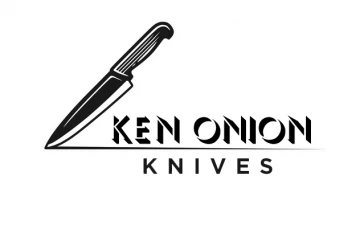
A diamond steel knife sharpener is a tool that uses a hard stone-like diamond cutting face to realign the blade edges of dull knives. They are also commonly referred to as honing rods.
A honing steel does not remove any steel from a knife, rather it straightens the edge and makes it cut better. Eventually however the knife will be too dull and it needs to be sharpened using either a whetstone or a sharpening system.
What is a sharpening steel?
A sharpening steel is a rod of ceramic, diamond or steel used to restore keenness to dulled blade edges. They can be flat, oval or round in cross-section and are typically up to 30 centimetres long.
They work by re-aligning the edge of a knife as it gradually loses its sharpness, and this keeps it sharp between sharpenings. However, a blade can also become curled or out of alignment over time due to natural wear and tear on the knife itself.
This occurs when microscopic “teeth” on the edge bend or misalign with repeated use, causing the knife to become blunt. A honing steel helps put these microscopic fibers back in alignment, and this is a process that should be performed on a regular basis.
A sharpening steel uses abrasive particles such as ceramic (aluminium oxide) or diamond to remove bumps, dents and scratches from the blade’s edge and make it sharp again. These abrasives are not used every time you sharpen a knife, but rather once or twice a month to keep the edge looking sharp.
What is the difference between a sharpening steel and a honing steel?
While both a sharpening steel and honing steel are important in maintaining the sharpness of your knives, they work differently. A sharpening steel will take a small amount of metal off the edge to create a new edge, while a honing steel will not remove any material and instead will push the blade back into alignment and straighten it.
Using your knife regularly will cause it to wear down a bit and the edge to twist or bend, often without even you realizing it. A honing steel will straighten these curled edges, re-align the microscopic fibers that can only be seen with a microscope and make your knives work as best as possible.
Honing steels are a standard feature in many kitchen knives sets, and they come in two basic types – steel and ceramic. The former tends to be more abrasive than the latter, so be sure you get the right one for your knife type.
How to sharpen a knife with a sharpening steel
A sharpening steel or honing rod is a handy tool to have in the kitchen, especially if you are in a pinch and need to restore the edge on a knife. You can also use it in between professional knife sharpenings to keep your knives sharp and in great working order.
When using a sharpening steel, the correct angle should be maintained between the blade and the sharpening rod. This will allow you to glide the edge of the knife across the sharpening steel from heel to tip while applying light pressure.
Regular honing helps to maintain a sharp edge by realigning the tiny microscopic fibers that curl up and bend over with regular use. However, this is only a temporary fix and if you have a hardened or dull blade the only way to get a sharp edge again is by sharpening it.
How to sharpen a knife with a honing steel
Honing your knife is an essential part of keeping it sharp. It re-aligns the tiny microscopic metal fibers that curl up when a blade gets dull and helps keep the edge strong.
The technique is simple. Gently place the heel of your knife against the top of the honing steel at an approximate 20-degree angle.
If your knife is a German or thicker style, you should set up at about twenty degrees.
For a Japanese or thinner style, you should set up at about fifteen degrees.
To hone your knife, hold the knife at an angle of about 10 to 15 degrees, or less if you’re using a ZWILLING knife.
Now you can take a series of alternating passes with your knife across the honing steel applying light to medium pressure, from heel to tip. Repeat this a few times and then wipe the knife clean. You can then use it for regular slicing and chopping.
